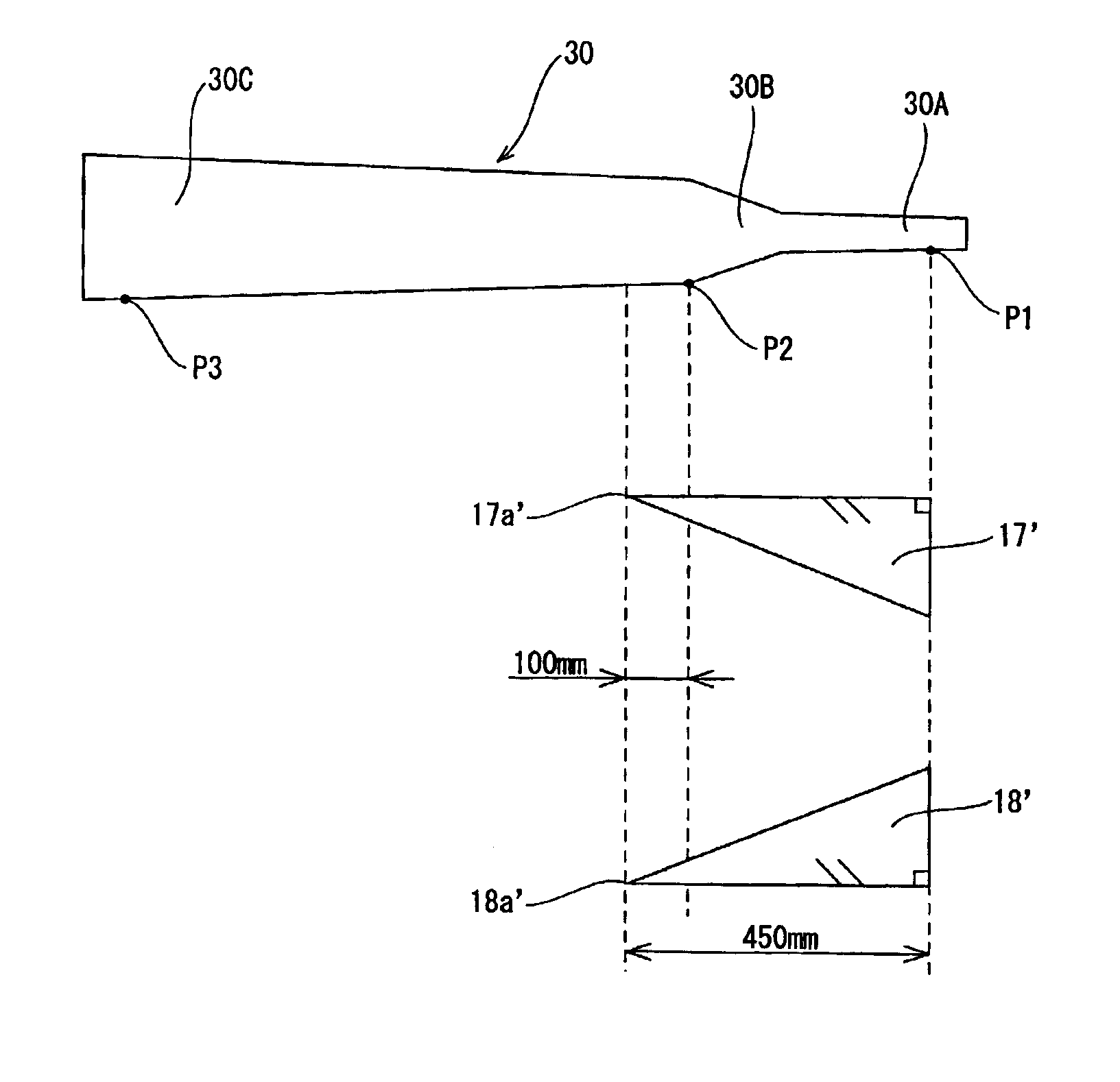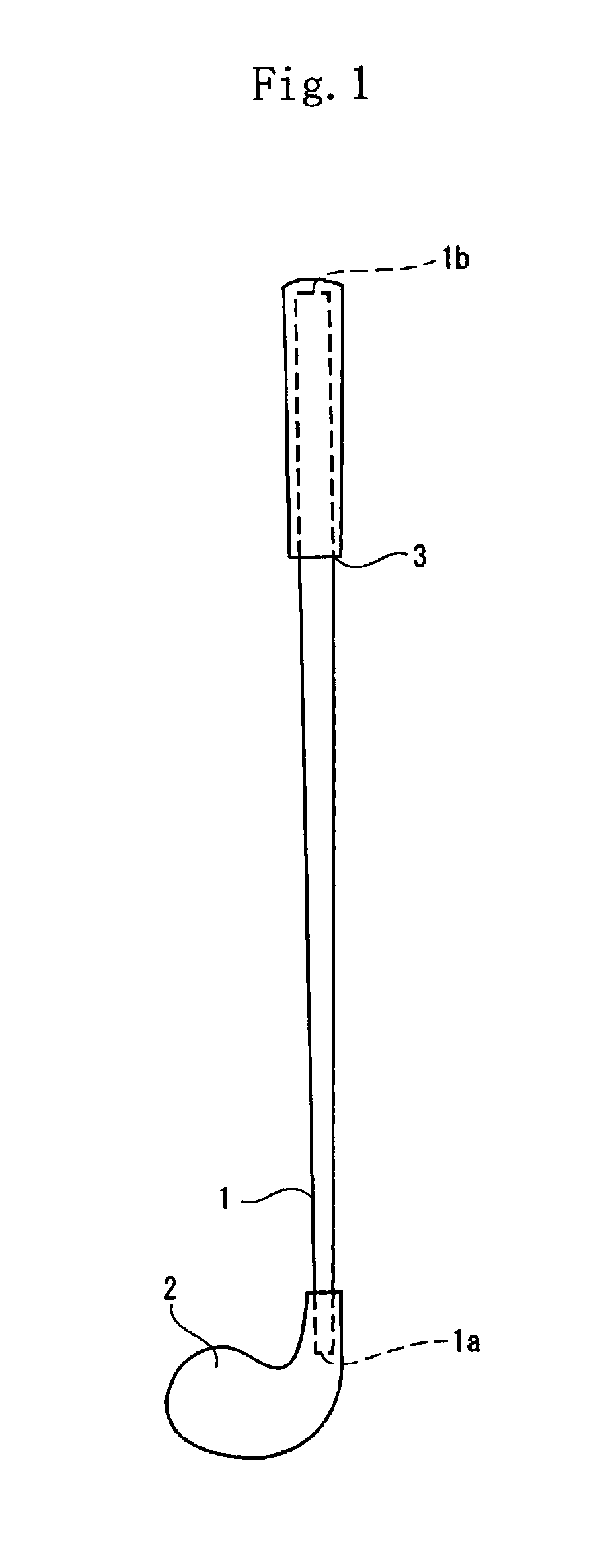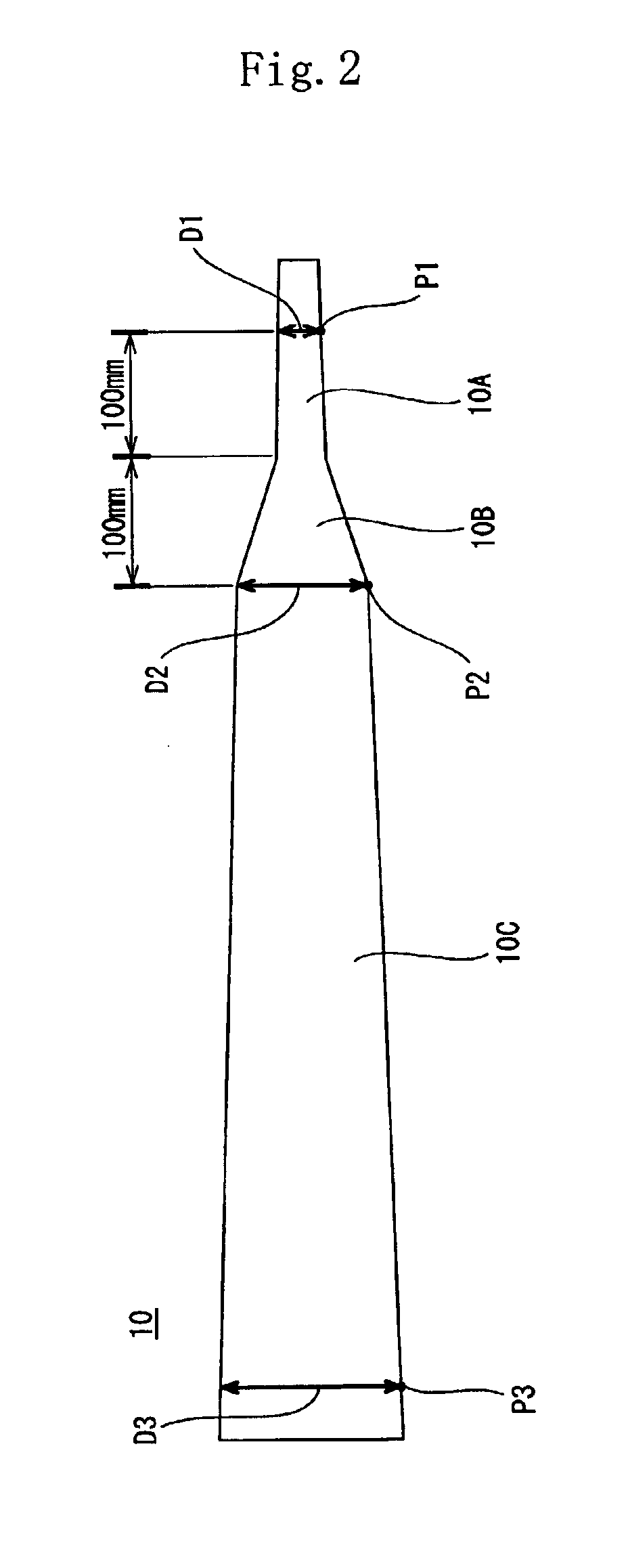Golf club shaft
a golf club and shaft technology, applied in the field of golf club shafts, can solve the problems of increasing the weight of the shaft, preventing the intention of making the shaft lightweight, and the shaft is liable to be broken, so as to prolong the flight distance of the golf ball, reduce the torque, and improve the effect of strength
- Summary
- Abstract
- Description
- Claims
- Application Information
AI Technical Summary
Benefits of technology
Problems solved by technology
Method used
Image
Examples
second embodiment
A golf club shaft according to the present invention will be described below.
As shown in FIG. 4, a mandrel 20 to be used to produce the shaft according to the second embodiment of the present invention has a steeply tapered part 20A disposed at the tip side of the shaft 1 and having a steep tapering ratio of 16.5 / 1000 in the axial direction of the shaft 1; and a gently tapered part 20B continuous with the steeply tapered part 20A and having a gentle tapering ratio of 8 / 1000 in the axial direction thereof. The diameter of the mandrel 20 at a position P1 corresponding to the tip 1a of the shaft 1 is set to 4.4 mm. The diameter of the mandrel 20 at a position P2 disposed at the boundary between the steeply tapered part 20A and the gently tapered part 20B is set to 7.7 mm. The diameter of the mandrel 20 at a position P3 corresponding to the butt 1b of the shaft 1 is set to 14.2 mm.
The steeply tapered part 20A extends in a length of 200 mm from the position P1 corresponding to the tip 1a...
example 1
A golf club shaft was prepared by using a mandrel and prepregs similar to those of the first embodiment and a method similar to that of the first embodiment.
example 2
The butt-side end of each prepreg of the tip-side angular reinforcing layer was disposed at the butt side of the mandrel with respect to the boundary position between the steeply tapered part and the gently tapered part. The distance from the butt-side end of the prepreg to the boundary position, namely, the deviation of the butt-side end of the prepreg with respect to the boundary position-was set to 300 mm which is about 26.2% of the whole length of the shaft. The shaft was made by carrying out a method similar to that of the example 1 except that the number of turns of the tip-side prepreg was varied from that of the example 1.
PUM
| Property | Measurement | Unit |
|---|---|---|
| fibrous angle | aaaaa | aaaaa |
| fibrous angle | aaaaa | aaaaa |
| angle | aaaaa | aaaaa |
Abstract
Description
Claims
Application Information
 Login to View More
Login to View More - R&D
- Intellectual Property
- Life Sciences
- Materials
- Tech Scout
- Unparalleled Data Quality
- Higher Quality Content
- 60% Fewer Hallucinations
Browse by: Latest US Patents, China's latest patents, Technical Efficacy Thesaurus, Application Domain, Technology Topic, Popular Technical Reports.
© 2025 PatSnap. All rights reserved.Legal|Privacy policy|Modern Slavery Act Transparency Statement|Sitemap|About US| Contact US: help@patsnap.com



